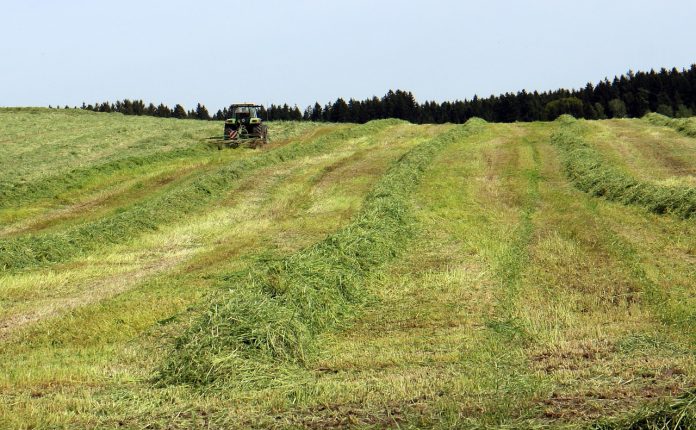Hay fires are caused when bacteria in wet hay create so much heat that the hay spontaneously combusts in the presence of oxygen.
At over 20% moisture, mesophilic bacteria release heat, causing the temperature to rise between 130°F to 140ºF with temperature staying high for up to 40 days. As temperatures rise, thermophilic bacteria can take off in your hay and raise temperature into the fire danger zone of over 175°F.
Assessing your risk
If hay was baled between 15-20% moisture and acid preservatives were used, there is still potential for a hay fire, but not as great as on non-treated hay. Most propionic acid-based products are effective if applied at the correct rates at inhibiting bacteria growth in hay up to 25% moisture, with variable effectiveness at 25-30% moisture.
Monitoring the haystack
If you believe that you maybe at risk for hay heating, monitoring temperature is critical. It should be done daily until temperatures stabilize in the safe zone or reach 150°F when monitoring needs increased to twice daily.
When monitoring hay temperature, be very cautious. Hot hay can burn within the stack and cause cavities underneath that you can fall into.
Use planks to spread out your weight while walking on the stack and have a harness system attached to the ceiling in case you fall into a burned-out cavity. Also work in pairs with someone on the ground within voice range to assist you if you find yourself in a bad situation.
Temperature monitoring should continue for possibly six weeks until values stabilize in the safe zone.
Reading temperatures
Temperature monitoring depends on the stack size but should be taken close to the center of the stack. In larger stacks ideally this is 8 feet down in the stack.
There are a couple options available to monitor hay temperature. One of these is high technology, like the cables that can be used to monitor temperature in stored grain. There are a couple companies that produce cables that would be placed between bales in a stack or monitoring probes that are placed in bales and use radio frequency to transmit signal.
You can also purchase a long probe thermometer or build your own. Building your own can be done with a 3/8-3/4-inch piece of pipe or electrical conduit cut into a closed point. The pipe size will depend on the thermometer probe size you will put in the pipe. A larger pipe can be used and a thermometer on a string lowered into the pipe. Drill 3/16-inch holes in the bottom four feet of the pipe. Leave the thermometer in the stack for about 10 minutes to get an accurate reading.
A less accurate method is to leave a pipe in the stack all day. If a section is too hot to hold in your hand when removed, you are at risk for fire.
Any time temperatures are above 175ºF, hay should not be removed from the barn until the local fire department is present. Once the fire department is there, hay should be carefully removed from the barn with charged fire hoses ready if spontaneous combustion occurs. Have a safe drying hay season this year!














